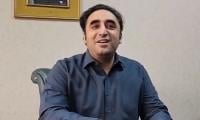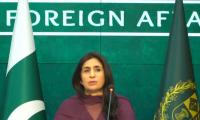The writer is a social development and policy adviser, and a freelance columnist based in Islamabad.
Primary education is the first stage of free and compulsory education in Pakistan that entails initial five grades of formal education for children of 5 to 9 years of age.
There are four types of primary schools in Pakistan – public, private, religious and self-help schools – while both English and Urdu are used as a medium of instruction. It is rare to find any learning trajectory of children from the pre-primary stage of schooling despite the fact that the National Education Policy (NEP) 2009 defines the entry age for pre-primary or Katchi as 3–4 years with one year curriculum, one dedicated teacher, and a separate room.
However, due to the lack of resources, there are no separate teachers for Katchi grades in 95 percent public schools and, thus, no formal Katchi class is taught in most public schools. Provincial governments have recently begun introducing Katchi classes in some public schools as per their provincial education plans, but it is at a rudimentary stage as Katchi is taught in multigrade settings.
According to the Pakistan Integrated Household Survey (PIHS), Unicef estimates and the World Bank’s country-wide reports of 2018, “Pakistan has a total of 150,129 primary education facilities of which 131,376 (88 percent) are in the public sector whereas 18,753 (12 percent) are run by private sector. At the primary education level some 5 million children are not enrolled in schools of which 19 percent and 31 percent are boys and girls respectively.
“Primary school education in Pakistan enrolls some 18.751 million children which can be broken down to 11.461 million (61 percent) and 7.290 million (39 percent) enrolments in public and private sector respectively. Data on total enrolment in primary education can further be segregated into 10.471 million (55 percent) and 8.280 million (45 percent) for boys and girls respectively.”
Pakistan has 324,561 primary school teachers in the public sector whereas the rest of the school teachers – 98,236 – are provided by the private sector. This means that out of the total number of 422,797 primary school teachers that Pakistan has today, the public sector accounts for 77 percent of them. According to the latest available data of 2018, Pakistan has 78 percent professionally trained teachers at the primary school level against the global average of 89.1 percent. If we break down this percentage on a gender basis, the situation becomes even worse for women than men, in that 89 percent men and 68 percent women teachers have had some kind of professional training.
Primary education in Pakistan was devolved as a provincial subject with the 18th Amendment to the constitution in 2010. The 18th Amendment to the constitution makes provinces autonomous to develop their own education plans which largely include strategy formulation for universal access to primary education, curriculum development, syllabus planning, resource allocation, school management, infrastructure improvement and quality assurance vis-a-vis access to primary education and measures to improve the learning outcomes.
With the enforcement of the 18th Amendment, the role of the federal Ministry of Education was reduced to providing assistance to provinces in curriculum development, accreditation and research and development. Concomitant with the 18th Amendment, Article 25-A was introduced to the constitution. Article 15-A makes the state responsible for providing free and compulsory education to all children of the age group 5 to 16.
Despite its constitutional assurances to make primary education free and mandatory under Article 25-A, Pakistan is one of the lowest performing countries of the South East Asian region in terms of access to primary education, its quality and the learning outcomes. Literature available on the status of primary education in Pakistan provides substantial evidence about the country’s unsatisfactory performance in comparison to the lower middle income countries in the South East Asian region.
According to a sector assessment report on school education (June 2019) published by Asian Development Bank, “Pakistan spends just 2 percent of gross national product on education which is a far lower percentage than in comparable countries of the region.”
After the 18th Amendment to the constitution in 2010, education became primarily a provincial responsibility which anticipated more funding available for primary education. However, there is no evidence of additional resource allocation while capacity constraints at the provincial and district levels impede realizing the value for money in public expenditures on education.
Pakistan has signed the Sustainable Development Goals (SDGs); and Goal 4 of the SDGs is about quality education and lifelong learning. According to the Global Monitoring Report 2015, Pakistan was unable to achieve the Education for All (EFA) agenda by 2015 despite invocation of Right to Education under Article 25-A of its constitution. In the region Pakistan ranked at the bottom with Bangladesh in the performance to achieve the EFA agenda. The Global Competitiveness Index (GCI) also shows that Pakistan lags behind the other countries of the region like India, China, Bangladesh, Sri Lanka and Malaysia in terms of competitiveness in provision of primary education services.
There is also a marked difference between urban and rural areas in terms of percentage of children’s enrolment share between public and private sector in primary schools. Share of enrollments in private primary schools is much higher in urban areas – about 60 percent of total enrollments. The private sector primary education providers include low-cost private schools to high-cost elite schools, stand-alone private schools, franchise schools, schools funded by government subsidies by provincial education foundations, and no-fee schools run by philanthropists and nongovernment organizations (NGOs).
However, there is no well-structured private sector regulation mechanism in place in the country. There is also a lack of authentic information available about the private sector to determine enrollments and exit as well as the quality of education. The data provided here is based on the last private school census which, in some provinces, took place as far back as 2005.
Enrolment choices at public and private facilities as recorded by the Annual Status of Education Report (ASER) (rural) from 2014-2019, suggests a clear shift in trends from opting for private sector to public sector schools. The report shows that in the rural areas enrolment in public sector primary schools has increased from 70 percent in 2014 to 77 percent in 2019 with a sharp decrease from 30 percent to 23 percent in private sector share. This trend indicates persistent government efforts over the past six years to improve public-sector facilities, ensuring teachers' presence and merit based recruitments.
Given its dismal state of primary education, one may conclude that Pakistan needs a radical strategic shift on multiple fronts – ranging from improving outreach to the quality of learning outcomes. This entails enhanced focus on ensuring 100 percent enrollment of out-of-school children at the primary level with a retention policy of all enrolled children. It is also important to introduce an overarching national action plan that must outline enhanced responsibility of provinces to implement pre-primary education as per the spirit of the national education policy.
Improving the learning outcomes at the primary level is contingent upon having a sound pre-primary education system to track and improve the learning trajectory of the children who are enrolled at the primary schools. This will require broadening and deepening reforms to reach the millions of children who are currently out of school.
Email: ahnihal@yahoo.com
Twitter: @AmirHussain76
A woman walks past a building of the International Monetary Fund. — AFP/FileThe annual and spring meetings of the...
Late Benazir Bhutto's daughter Asifa Bhutto Zardari addresses the Christian community in Bihar Colony on January 23,...
Representational image. — PexelsWater is an important scarce natural resource that is required for several everyday...
Pakistani employees of online marketplace company Kaymu at work in Karachi. — AFP/FileThe true spirit of development...
India uses Afghanistan as a backstage area to carry out terrorist attacks against Pakistan
Another report by the Pakistan Institute of Peace Studies states that 78 per cent of attacks have been carried out by...







